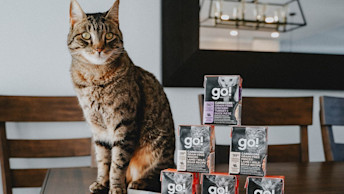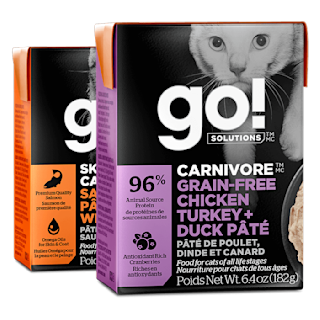August 11, 2021
Help! My Cat Won't Eat Wet Food

It’s not unreasonable to assume that any cat or kitten would be more than happy to eat wet food, but that is not always the case. Many people feed their cats dry food only because it is more convenient, less expensive, and because of the myth that wet food will cause dental issues. Because cats are creatures of habit they may be reluctant to try wet food when it is first introduced to them. However wet food is an essential part of a healthy feline diet and should be incorporated into regular feedings.
Importance of Wet Food
Cats and kittens need a relatively high intake of water in order to stay healthy. Dry food only contains about 10% moisture, while wet food contains anywhere from 70% to 80%. Unfortunately many cats do not drink enough water to stay properly hydrated so any added moisture in their diet is important. Cats were originally desert dwellers and their “thirst drive” is lacking. As cats get older, and their overall food intake is smaller, wet food becomes even more necessary. So while younger cats and kittens can get wet as a supplement to their dry kibble, older cats may need wet food only.
Water in cats is necessary for:
Avoiding urinary tract issues such as crystals and infections
Helping kidneys flush out toxins
Promoting the proper functioning of many organs such as the kidneys, liver, and brain
Preventing certain types of cancers
My Cat Won't Eat Wet Food
Hopefully by now you have decided to add wet food to your cat’s menu, but your cat is not used to it and refuses to eat it. Don’t fret, even though cats and kittens don’t like change, with patience and persistence you can teach your cat to enjoy a side dish of wet food. It may take time, but sooner or later one of your tricks will work, so don’t lose hope. If you happen to be adopting a kitten your job will be easier if you start them on some wet food from day one.
Tips on how to get wet food into your finicky feline:
Keep it fresh and refrigerate any unused portions
Keep it room temperature, or even a bit warmer (if using food from the refrigerator add some hot water)
Cats tend to prefer food that is more aromatic so choose “stinky” foods
Try different kinds of flavour, textures such as minced or pâtés, and shape (some cats refuse to eat fish flavoured food, while others will eat nothing but)
Instead of free feeding, set up a feeding schedule, and introduce wet food once the schedule is established
Mix in small amounts of wet food with the regular dry food
Add some warm water to the food to make it even smellier
Cats can develop fatty liver disease after 3 to 4 days of not eating, or eating very little (sooner for obese cats), so if your cat is refusing to eat for longer than a couple of days stop, and try introducing a different flavour or texture a few days later. Chances are that, like the majority of cats, your feline will be thrilled with the new, smelly, easy to eat dinners.
With Go! Solutions wet food recipes you can choose from a wide variety of flavours such as chicken, salmon, duck, and more for your cat to try. There are different product lines to meet your cat's unique dietary needs. They also come in minced and pâté in order to give your cat a choice of texture.

Recommended Solution
Pocket-Sized Paks of Solutions-Based Nutrition
Formulated to provide solutions for cats’ unique dietary needs including picky eating, dandruff or dull coat, and food allergies or sensitivities.
View wet food recipes


